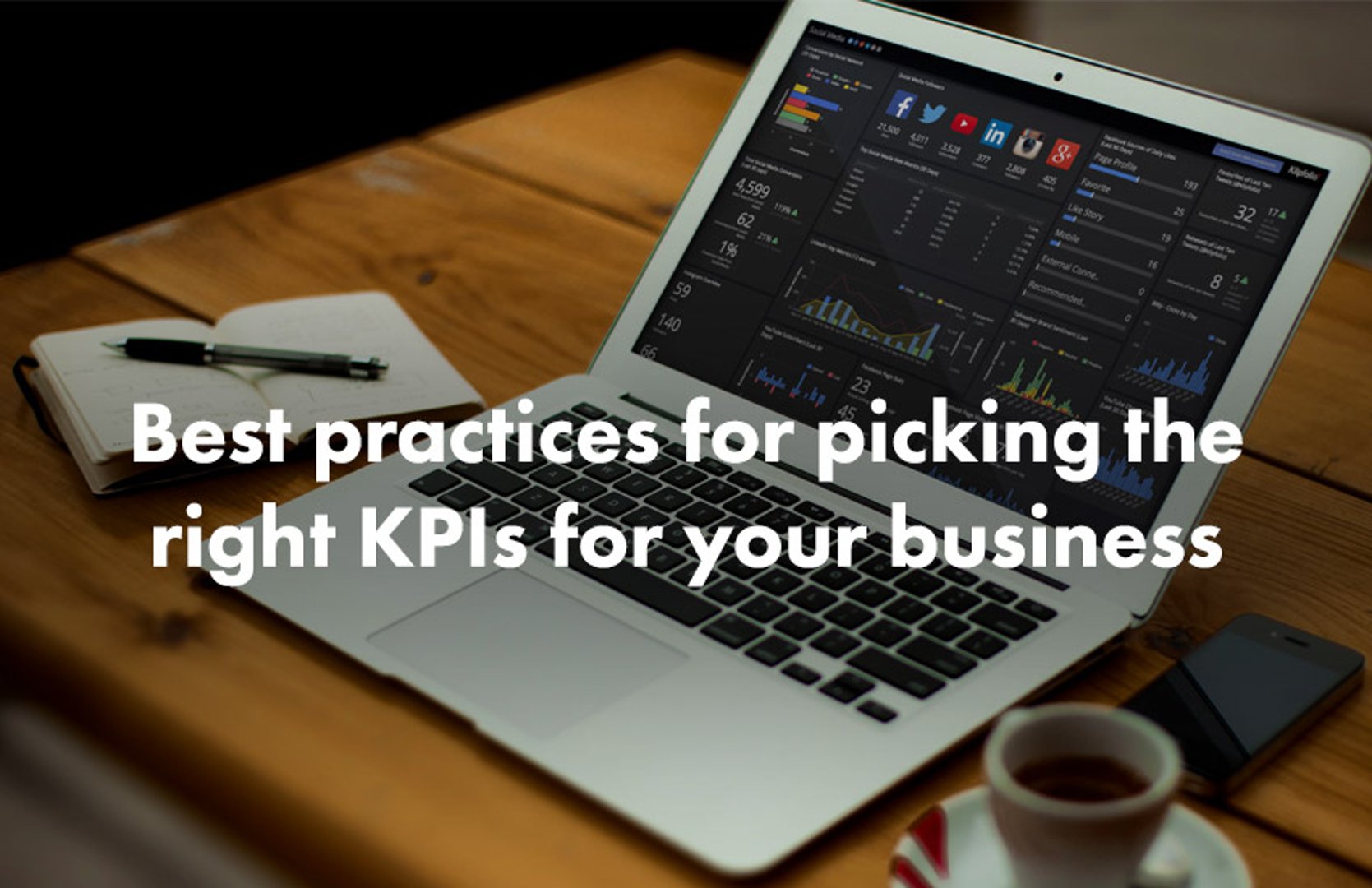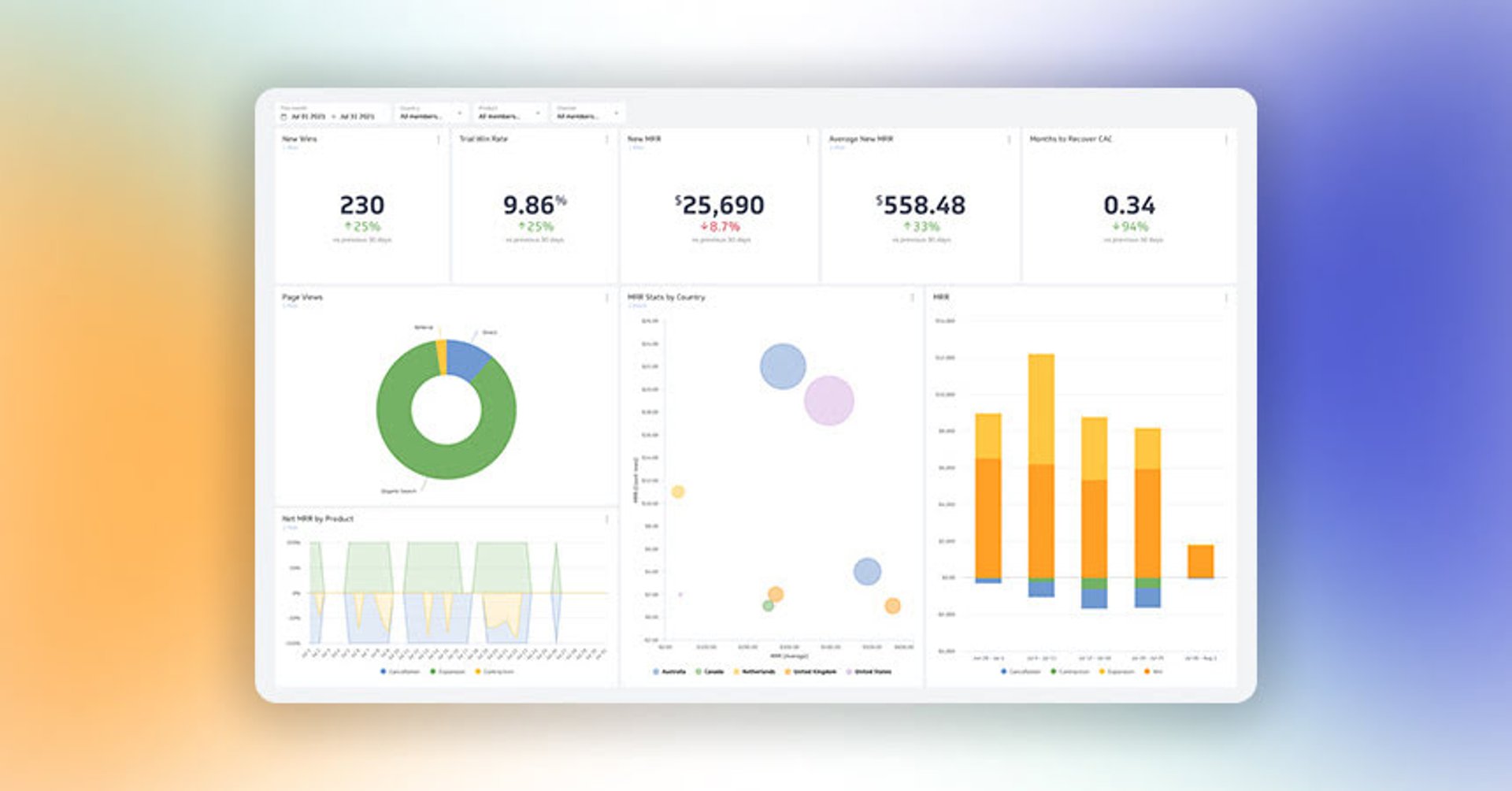Best Practices for Picking the Right KPIs for Your Business

Published 2025-11-21
Summary - The metrics you choose can make the difference between sustained growth and stalled performance. Learn six criteria for selecting KPIs that align with your strategy, stay attainable, accurate, and actionable, and get reviewed regularly. Includes tips for building effective dashboards in Klipfolio Klips.
Data and metrics are everywhere, and so are “Key Performance Indicators” (KPIs) — metrics that signal that a business is performing well, or not. Measuring and monitoring business performance is critical, but focusing on the wrong metrics can be detrimental because time and money get spent tracking and improving metrics that don’t matter much. Poorly structured KPIs, or KPIs that are too difficult and costly to obtain or monitor, can have the same effect.
So what makes business performance indicators “key,” and how should a business owner, executive, or manager select them? Here are six factors that separate effective, value-creating KPIs from detrimental, value-diminishing KPIs. The right KPIs for your business will be:

1. Pick KPIs That Are Aligned With Your Strategic Business Objectives
Business performance is relative and measured against your mission and goals. Key Performance Indicators must be grounded in those goals. The challenge: most businesses have short-, medium-, and long-term objectives at the same time, and there is often debate about whether top-down or bottom-up approaches should guide performance management.
Tips to navigate the complexity:
- Select different KPIs for different levels of management. Executives tend to focus on medium- and long-term objectives, managers on medium- and short-term objectives, and front-line teams on short-term objectives. Instead of trying to build KPIs that speak to every group at once, select KPIs for each audience based on their objectives and the decisions they make. Mark Flaherty’s discussion of “hub and spoke” KPIs is useful here.
- Select KPIs informed by both top-down and bottom-up metrics. The most effective KPIs marry business objectives with product-market fit. A good example is “Customer Referral Rate,” which measures the proportion of current customers who refer new customers. From the bottom-up, it reflects satisfaction, engagement, and loyalty. At the operator level, it signals effective marketing and the ability of sales and support to convert referrals. At the executive level, it can be a sales KPI tied to a goal such as X% organic growth in a quarter. KPIs divorced from business success risk unprofitability, and KPIs divorced from customer success are detached from reality. Aim to marry the two.
- Avoid cookie-cutter KPIs. Your business and goals are unique, and so are your KPIs. Pick the KPIs that will help you get to your destination and display them on your executive dashboard to align your organization.

2. Make Sure the KPIs You Pick Are Attainable
There is no point selecting a KPI if the data behind it can’t be obtained and surfaced to stakeholders, or if doing so would be overly costly. When assessing cost versus benefit, ask:
- What data points are required to measure this KPI?
- What technologies and processes are needed to access this data on a regular basis?
- What technologies and processes are needed to surface this KPI to relevant stakeholders and operators?
- What will this cost, and what are the expected returns?

3. Be Acute in Your Choice of KPIs
KPIs should keep everyone on the same page and moving in the same direction. They should be specific enough to drive specific actions. If a KPI is too high-level or vague, it can be interpreted and acted on in many different ways. “Customer Acquisition Cost to Lifetime Value (CAC/LTV)” is an acute KPI for service businesses, provided stakeholders understand the inputs and have some control over them. “Operating Costs” is not as acute and is less useful for day-to-day decisions.
Limit the number of KPIs you focus on:
- Fewer KPIs force a clear choice about what is truly “key” to your success.
- The fewer KPIs you monitor, the more attention they get.
- Continuously improving KPIs takes time and effort, and it can be costly. The more KPIs you pick, the more it costs to monitor and improve them.

4. Pick Accurate KPIs
Consider both the accuracy of the data flowing into a KPI and the reliability of the KPI in reflecting performance.
- Does the KPI include all relevant information? For “Customer Acquisition Cost (CAC),” you’ll likely need to pull and aggregate data from multiple sources: marketing, sales, and admin spend, plus some overhead. This may include marketing platforms like Google Ads, Excel spreadsheets, your CRM (such as Salesforce), and accounting software like Xero or QuickBooks. Getting an accurate CAC reading requires pulling all this information together and surfacing it as a single metric. This process can be complex and error-prone, and it may require IT support. Avoid the temptation to ignore hard-to-access sources, or the reading will be off and actions may do more harm than good.
- How accurate is the KPI at reflecting and predicting performance? If everything appears on track but your KPI is off, ask whether it is truly “key.”

5. Select KPIs That Are Actionable
A useful test is twofold. First, can at least some of the events behind the KPI be influenced by the business? If the circumstances are entirely out of your control, the KPI can’t be actioned. Second, is the KPI structured and presented in a way, and to the right people, that incites action?

6. Pick KPIs That Are Alive
It’s easy to get comfortable with a set of KPIs you’ve relied on for a long time. Your business isn’t static, and your KPIs shouldn’t be either. Periodically review your reasons for selecting specific KPIs. Do those reasons still hold? Has your business, or the context around it, changed? Can the KPIs be refined to match what’s next?
Also review how you monitor and act on KPIs. Are decision-makers watching them and working to improve them? Do they have the right tools? Is your KPI ecosystem supporting data-driven decisions and better outcomes? With Klipfolio Klips, you can bring these KPIs into a real-time dashboard and share clear, on-brand reports with your team.
Data, metrics, and “KPIs” are everywhere. It’s easy to lose focus on the metrics that are truly mission-critical. Taking the time to think critically about why a particular KPI is “key” to your business is worth it. Learn how Klipfolio Klips helps you turn your data into insight.
Picking the Right KPIs: References
Also, see:
Related Articles

Top 10 Marketing Dashboard Ideas for Tech Companies

17 KPIs Every Data-Driven Manager Needs to Lead Their Team
By Danielle Poleski — October 14th, 2025
7 ways to present KPIs that your management team will love
By Danielle Poleski — September 25th, 2025

